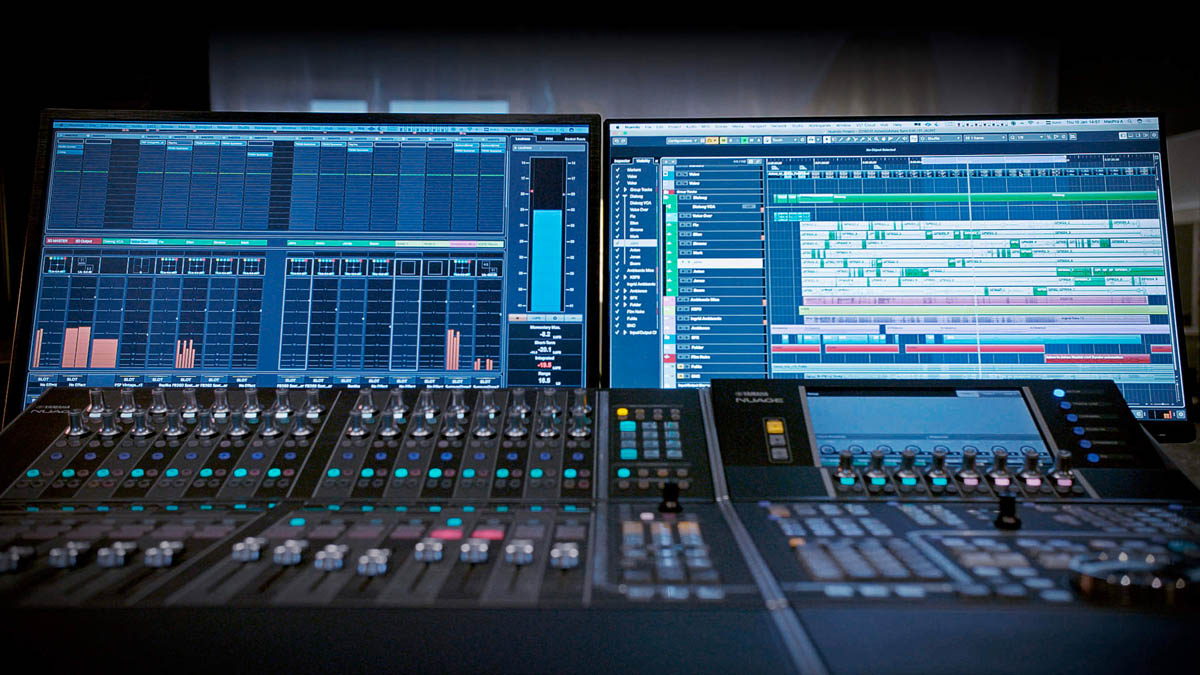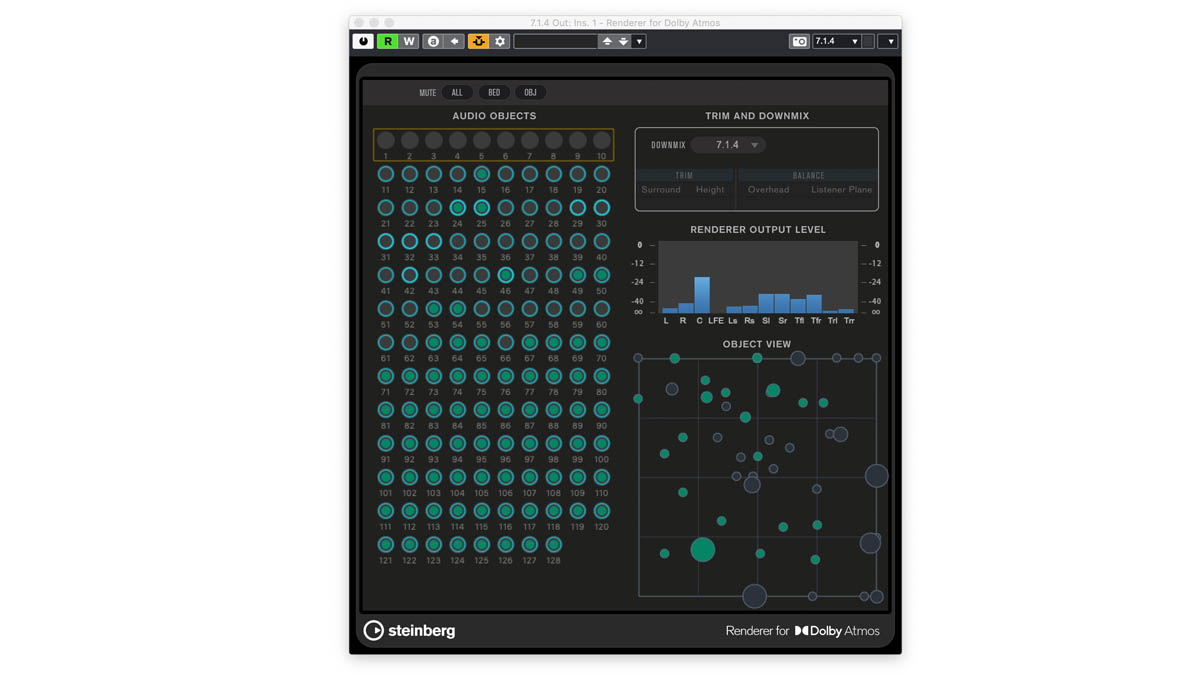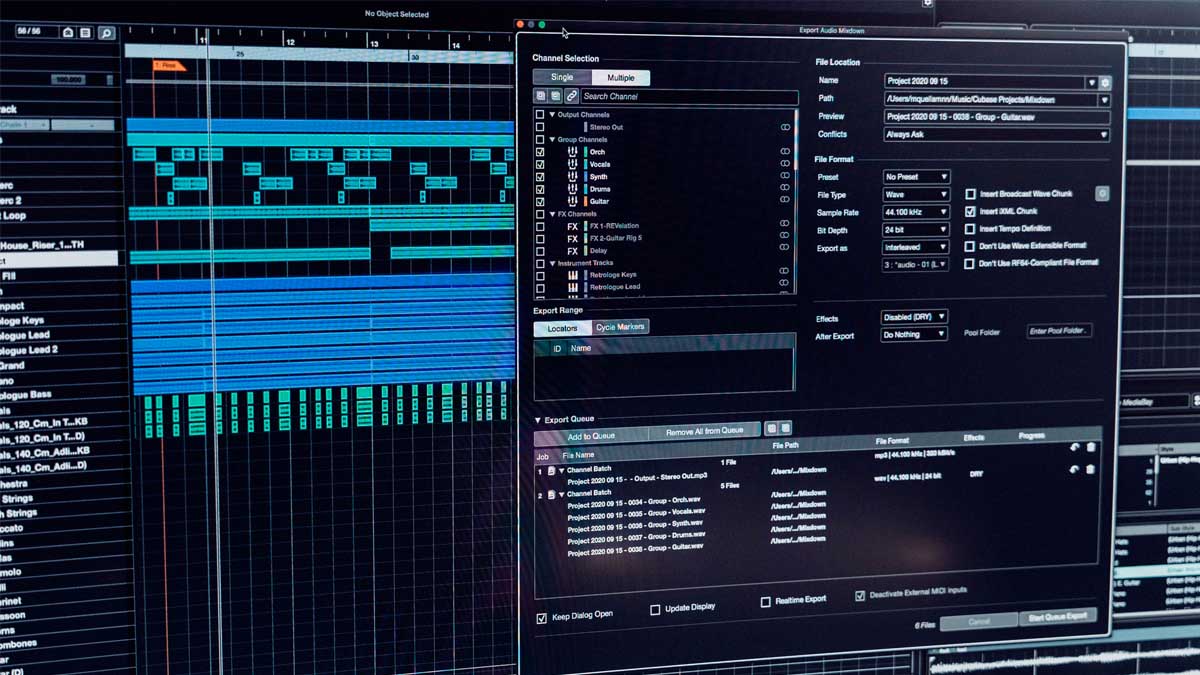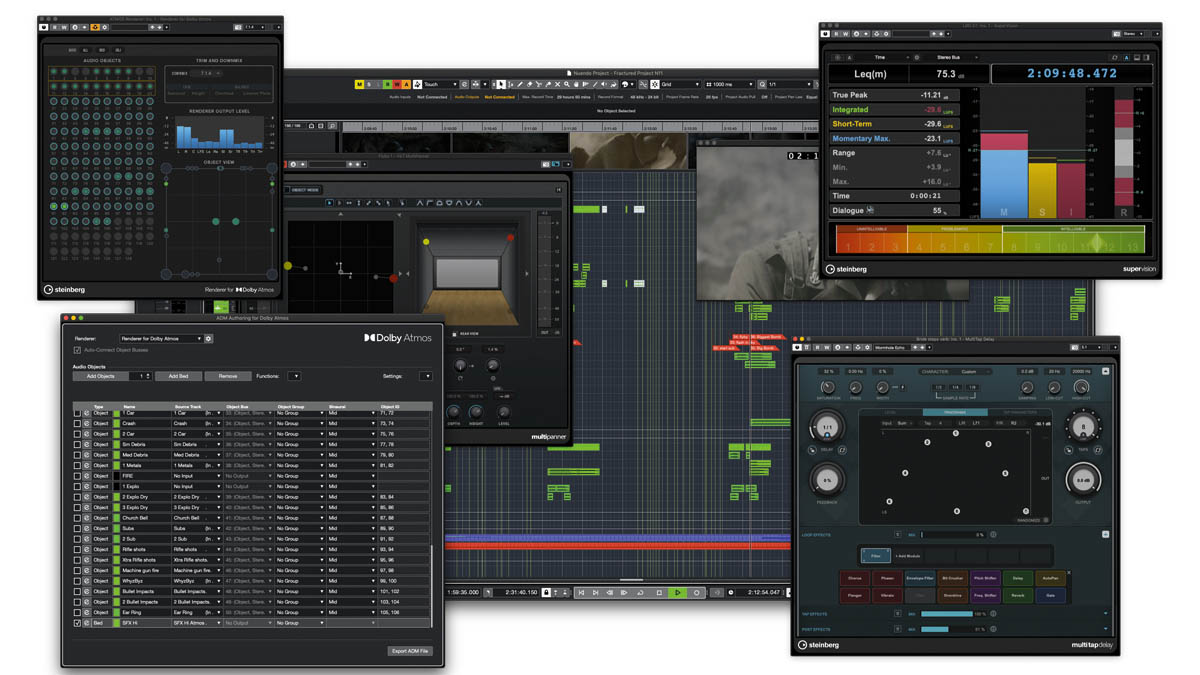MusicRadar Verdict
For film, TV, games or VR, Nuendo 11 delivers all you need.
Pros
- +
All-in-one Dolby Atmos workflow.
- +
Includes all Cubase Pro 11 updates.
- +
Comprehensive metering and visualisations with Supervision.
- +
Access Soundly library directly from Nuendo.
Cons
- -
Expensive.
- -
Tricky converting existing Atmos projects for internal renderer.
MusicRadar's got your back
What is it?
When Nuendo was first released back in 2000, Steinberg worked hard to differentiate their new platform from their long-established Cubase, and they did this by positioning their new DAW to take on Pro Tools’ then-dominance of the post-production market.
Over the years since, Nuendo’s toolset has expanded to cater for those working with games development, VR content creation, and advanced sound design, and has constantly honed its capabilities in the TV and film post-production sphere. By including all of Cubase Pro’s features, it’s not half bad at audio recording and music-making too!
All of the new features found in Cubase Pro 11 are also to be found in this latest Nuendo release.
Check out our review for the complete low-down, but in brief, we’re talking: improvements to the Key and Score editors; a new multi-channel sidechain engine; improved ARA2 support; important new plugins, and updates to some existing ones; graphical tweaks; the inclusion of SpectraLayers One, a cut-down version of Steinberg’s spectral editing system; improved Sampler tracks; export queuing; and much more.
As you would expect, Nuendo 11 also boasts a bunch of updates that are all of its own.
Performance and verdict

Atmospheric
Nuendo 11’s biggest headline-grabber is that it now has a built-in Dolby Atmos renderer. For those who don’t know, Dolby Atmos is a multichannel surround sound technology that includes height channels alongside the regular front-back/left-right channels.
It also solves the problems associated with trying to produce a surround sound mix that will remain convincing (or as convincing as possible) irrespective of the surround configuration and speaker layout used for playback.
Nuendo has been able to work with external Dolby Atmos renderers – hardware and software – for a while, and still can, but the new built-in renderer brings the entire Dolby Atmos production pipeline under one roof, along with attendant workflow improvements.
For example, tracks in your project can be added to the Atmos configuration with just a click or two and will bring with them any panning automation that you have set up on the source track. Also, creating a finished multichannel ADM wave file involves just a click-or-two.
If there’s any downside it’s that the internal Dolby Atmos renderer doesn’t support all main mix output configurations (2.0, 5.1, 5.1.4, 7.1 and 7.1.4 are supported). This is fine when setting up for a new project, but can be tricky if you wish to convert an existing project created using an unsupported configuration.

What did you say?
The new Supervision plugin provides you with a comprehensive metering solution that can show you up to nine visualisations within a single, resizable, plugin instance. The different visualisations are provided for you as modules, and cover level and loudness metering, spectral readouts, phase meters, surround meters and waveform displays.
Three of the modules are exclusive to Nuendo 11, the first of which is a simple Leq(m) readout, which displays a cumulative average volume level for the buss that it will be measuring.
There are 150 new effect plugin presets for use in post-production projects. These brilliantly-designed presets combine Nuendo’s built-in plugins to create realistic emulations of loudspeakers, room and environment ambiences
Next up is the Intelligibility Meter. This uses AI-based speech recognition technology, developed by Fraunhofer IDMT, to calculate, in real-time, the effort a listener needs to expend in order to understand the dialogue within a mix.
The result is displayed as a moving marker on a bar graph divided into 13 segments. A score of 13 is considered unintelligible, 47 is “problematic”, and 8 or over is intelligible. The system currently recognises English and German speech and can adapt its analysis to cater for the hearing impaired, as well as for situations where a voiceover overlays another dialogue track.
Changes in the production landscape are reflected in the dedicated Loudness (Netflix) module. As the name might suggest, this variation on a standard loudness meter has its reference levels pre-configured in order to match Netflix’s published specifications.
Also in keeping with those specifications, if more than 15% of the audio range contains dialogue, the module switches from a program-gated to a dialogue-gated loudness measurement – in other words, loudness is only measured during passages of dialogue.

More that’s new for Nuendo
Nuendo 11 gets the same new plugins as its stablemate – Imager, Squasher and Frequency 2 – as well as the new MultiTap Delay that supports up to 7.1 surround sound. The processor’s up to eight signal taps can be freely positioned within the surround sound field.
The plugin also has some additional built-in processors for colouring and morphing the sound, and these can be inserted into the feedback bus, the delay taps bus, and the main output bus.

• Steinberg Cubase 11
Cubase 11 not only adds some great new features but also evens up its three versions, delivering a professional option to suit most wallets.
• Presonus Studio One 5
It’s quite incredible how far Studio One has come in the decade since its launch, and version 5 is mature, stable and an awesome update to an already superb DAW.
• Logic Pro X
In its unstated aim of achieving functional parity with rival DAWs, Logic Pro X 10.5 adds a wealth of empowering features and systems, including grid-based clip launching and an embarrassment of sampling riches.
Nuendo’s royalty-free content library has received a 7GB boost in the form of the Game Sound-FX and Pro Sound Effects libraries. And if these don’t satisfy your need for SFX, Nuendo now integrates closely with the Soundly app, making it easy to browse their vast online library and import content directly into Nuendo’s timeline.
There are also 150 new effect plugin presets for use in post-production projects. These brilliantly designed presets combine Nuendo’s built-in plugins to create realistic emulations of loudspeakers, room and environment ambiences; there’s also a set of presets for simulating robotic voices.
If your only interest is music-making then perhaps Nuendo’s feature set will be overkill. But if you have any interest in, or involvement with, audio post-production, video game or VR production, or sound effect creation, then Nuendo 11 contains almost everything you need, right there in one package. And, unlike its main competitor, you don’t have to pay a monthly subscription in order to use it!
MusicRadar verdict: For film, TV, games or VR, Nuendo 11 delivers all you need.
Hands-on demos
Steinberg
Specifications
- TYPE: DAW
- KEY FEATURES: Updates include Dolby Atmos production tools, Netflix Loudness Meter and Intelligibility Meter, SpectraLayers One, enhanced sound design tools, plus exclusive sound effects
- SYSTEM REQUIREMENTS: macOS Mojave / macOS Catalina, 4 GB minimum required memory 8 GB RAM or more recommended, 36 GB free storage space; 64-bit Windows 10 Version 1909 / 64-bit Windows 10 Version 2004
- CONTACT: Steinberg
Computer Music magazine is the world’s best selling publication dedicated solely to making great music with your Mac or PC computer. Each issue it brings its lucky readers the best in cutting-edge tutorials, need-to-know, expert software reviews and even all the tools you actually need to make great music today, courtesy of our legendary CM Plugin Suite.
With its latest free update, Ableton has finally turned Note into the app I always wanted it to be
Technically capable, but struggle to make your tunes sound musical? 5 simple music theory hacks to make your tracks stand out
"Despite its size, it delivers impressive audio quality and premium functions as well as featuring a good selection of inspired sounds": Roland GO:Piano 88PX review











